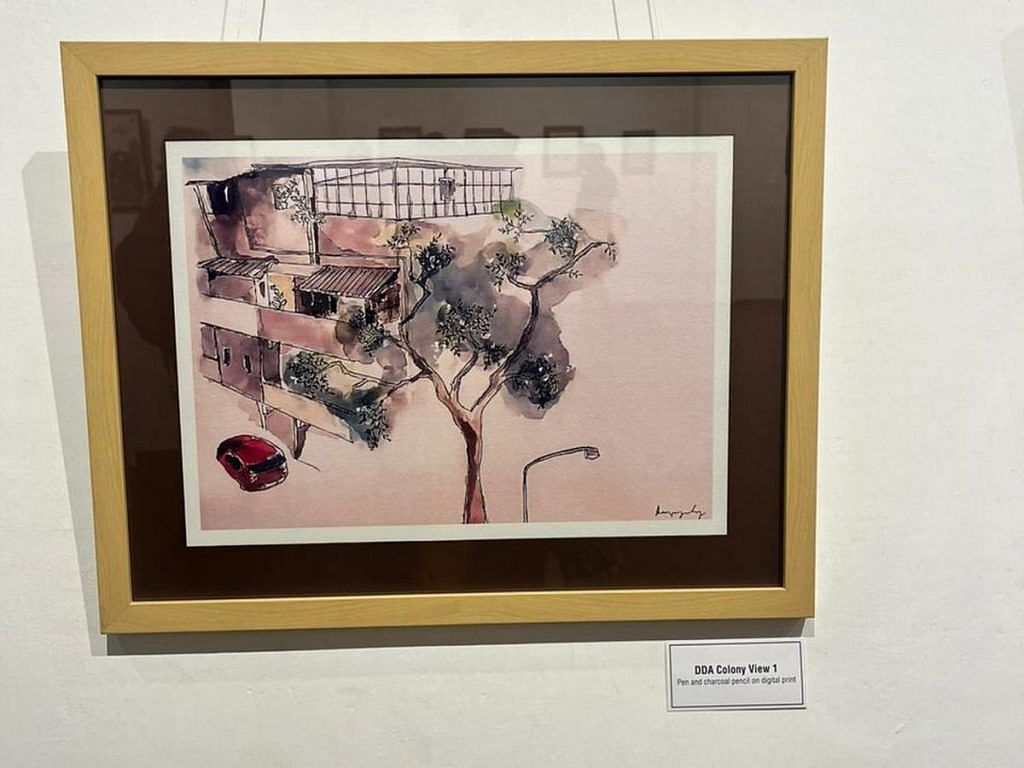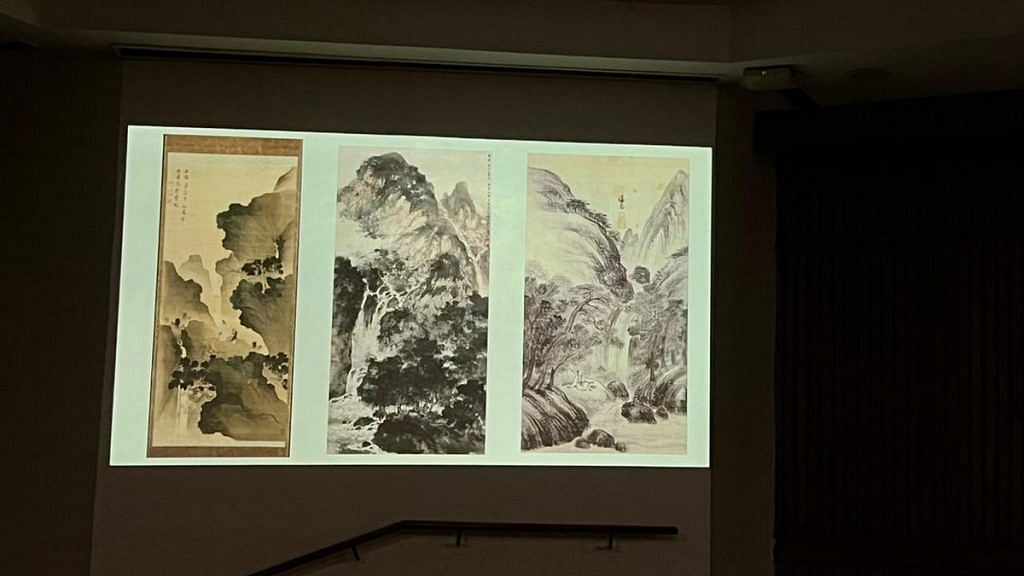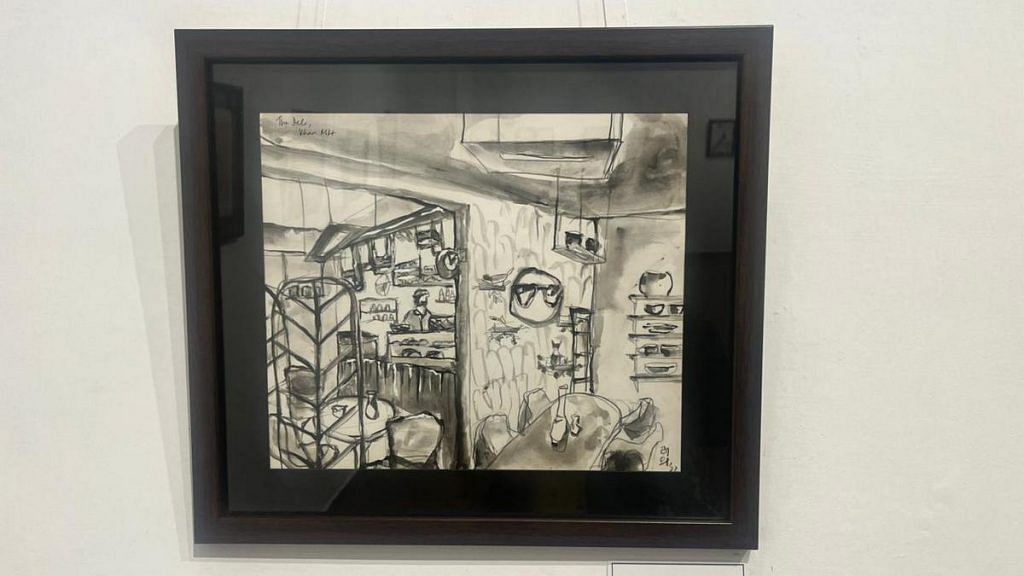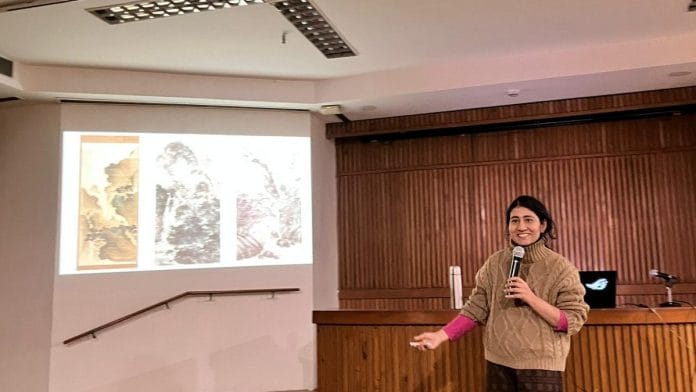Delhi: The titles are prosaic and functional—DDA Colony View 1, Deli Café, Bamboo—but there’s a quiet poetry woven into the roughly 30 artworks, many inspired by Delhi’s residential neighbourhoods. From buildings to landscapes, everything looks familiar but also strangely foreign. All the works are done in the unique Korean ink painting style by Delhi-based artist Anupriya Roy.
“Korean ink painting is about looking at the resilience of bamboo, the gushing force of a stream, the delicateness of an orchid. It is an undefined engagement of the subject and viewer,” said the 40-year-old artist, who teaches a course on Korean ink painting at Jamia Millia Islamia University.
Roy held her first solo exhibition, ‘Yeobseo: Postcards from Delhi’, at the India International Annexe last month. “Yeobseo”, meaning “hello” in Korean, served as Roy’s way of introducing the art form to Delhi’s art connoisseurs. However, her talk on the subject on 24 February saw a meagre turnout of only five people, a hint perhaps of the challenge of establishing Korean ink painting within the Indian art scene.

Also Read: Big K-pop stars aren’t coming to India and it’s because fans aren’t rich enough
The East Asian perspective
The East and West differ in their artistic approaches to the physical world, Roy demonstrated in her 30-minute talk. While Western art favours realism, Eastern art tends towards nature and symbolism.
To illustrate her point, Roy provided a comparative analysis of Western and Eastern art, contrasting works by Western masters with examples of East Asian paintings.
She showed how The School of Athens, a famous fresco by Italian Renaissance artist Raphael, uses Western principles such as perspective and realism “to the hilt” to focus on the figures of Aristotle and Plato at the centre.
In the next slide, she showcased three different paintings, one each by a Chinese, Japanese, and Korean artist. All three East Asian paintings shared certain themes—valley, waterfall, and human figures.
“The majestic waterfalls are heightened in scale because the humans are so small. You can see the difference in focus between the West and East,” said Roy, a travel writer before she gravitated to art.

Roy emphasised that European Renaissance artists viewed art and nature as distinct entities, a concept absent in Eastern thought. “It’s art in nature and nature in art. The ideal subject in nature also made for the ideal subject in art,” she said. “Reflecting both in ideal terms was the artist.”
The Korean painting style, according to Roy, merges the character, mood, and emotions of both the subject and the artist.
The Korean style is also defined by strong Chinese influences, evident in the symbolic importance of the “four gentlemen”—cherry blossom, chrysanthemum, orchid, and bamboo. Each corresponds to a season and embodies certain virtues. Orchids represent summer and the virtue of honesty; for chrysanthemums it’s autumn and innocence. Bamboo signifies winter’s resilience, and the plum blossom signifies spring and perseverance.
Which of these is painted, said Roy, serves to teach viewers about the virtues practiced by the artist. These plants are typically depicted in black and white, as colour was “considered an unnecessary distraction from the underlying symbolism of this art form”.
But Roy also pointed out that learning Korean painting is less about rigid conventions and more about a certain approach.
“When we start teaching Korean painting, we don’t tell students to identify with this or that school of painting or style of art,” she said.
Also Read: How do you really look at a Tamil Nadu temple? Chennai lecture series is helping
A chance encounter
Ten years ago, Roy couldn’t have remotely imagined becoming a Korean ink painter, let alone teaching it. She wasn’t looking for it, but it found her, she said.
“I came to it (Korean ink painting) for a reason, or rather this came to me for a reason,” said the soft-spoken artist.
A decade ago, she was hanging out at the Korean Culture Centre’s café when she came across posters advertising Korean language classes. “I told myself, ‘Let’s try something new’,” Roy said.
At that time, Roy, a postgraduate degree in literature, had just left her job at a travel publishing company. She planned to write a graphic novel, but the Korean language classes became a gateway to a radically different career path.

The cultural centre, established in 2012, also offered Korean ink painting classes. Roy enrolled in 2015, marking the beginning of her love affair with the art form.
Art, however, wasn’t entirely unfamiliar territory for Roy. “My grandfather used to take me to art galleries. I used to love sketching but I didn’t have formal training. Korean ink painting was the first time I had formal training,” she said.
For the next few years, Roy leaned under a Korean teacher and later apprenticed under her. During that time, she exhibited a calligraphic scroll titled ‘Lamp of the East’—a reference to a poem about Korea by Rabindranath Tagore.
In 2019, Roy’s journey reached another milestone as she began teaching an elective paper within the Visual Effects and Animation course at Jamia Millia Islamia University. Some students questioned the practicality of studying Korean ink painting compared to gaming, Roy said, but there have been many positive responses too.
“The best feedback is when they start doing their workshops on campus,” Roy said. “They take Korean ink painting up as their own baby.”
(Edited by Asavari Singh)






